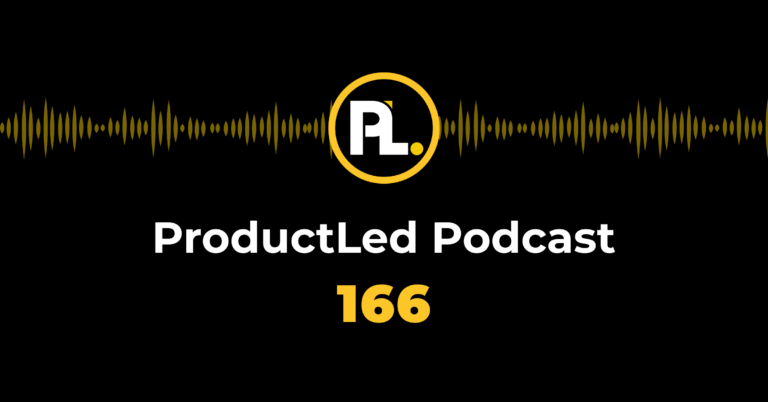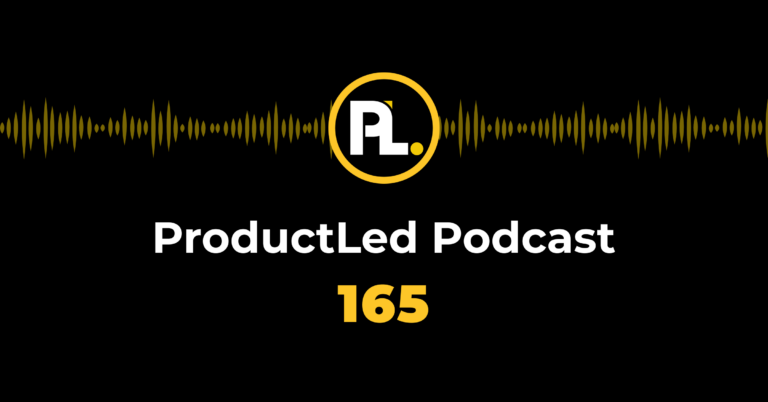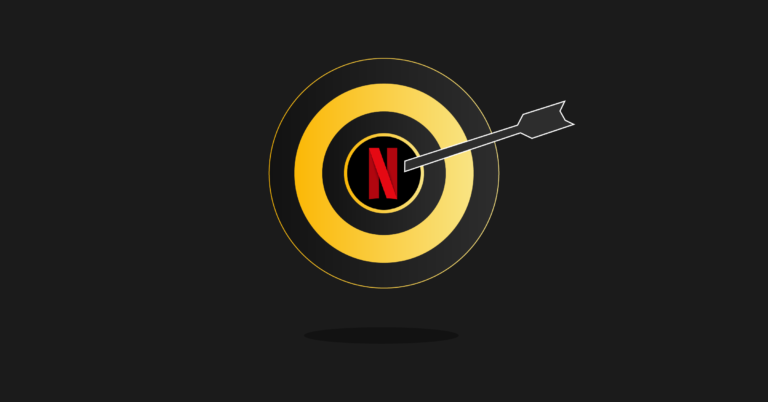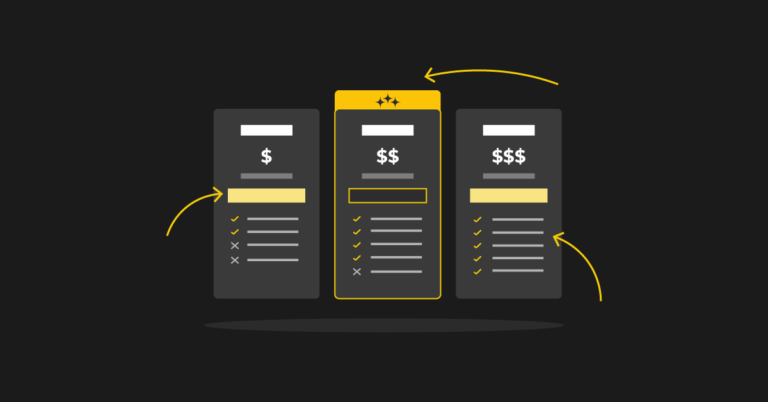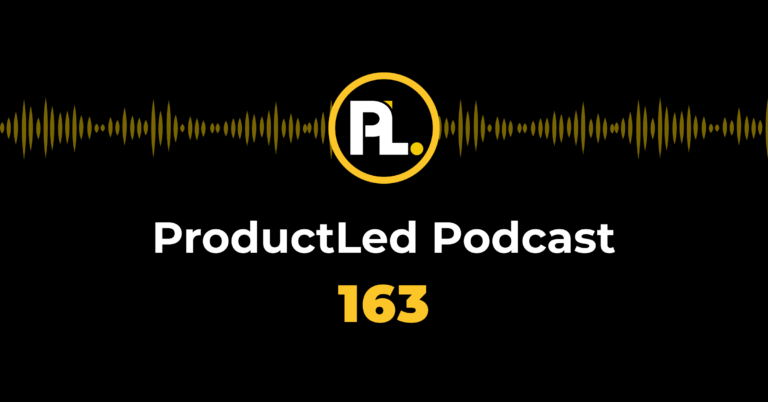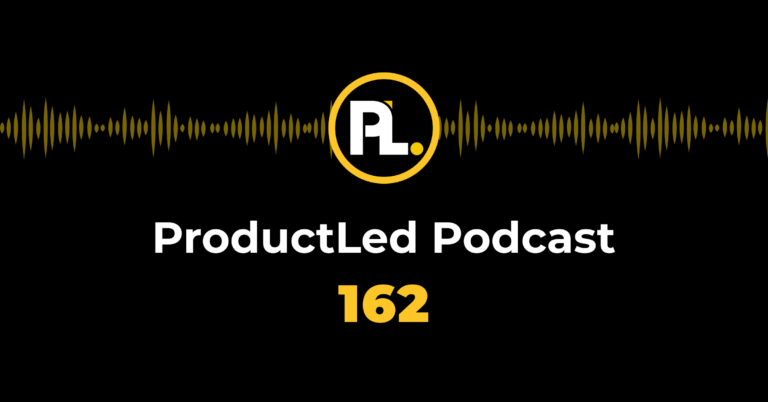Codecademy is an online coding educational platform that has amassed over 50 million users by successfully transitioning to a freemium business model.
However, this achievement came with our fair share of challenges and crucial lessons.
In this article, I break down Codecademy’s journey from being a 100% free platform to embracing a freemium model, offering valuable insights into our unique strategy, monetization timeline, and challenges we encountered along the way.
The transformation of Codecademy from free to freemium is a model case study for businesses seeking to adopt a similar model.
But first, let's explore freemium and the elements to consider before implementing the strategy.
What Is the Freemium Model?
The freemium model offers free and paid versions of a product or service. It allows users to access basic features for free while offering premium features at a cost.
There's not a single mold for how to implement a freemium strategy into your product-led growth business. Codecademy started with a free product and iterated towards a freemium model over time.
If you're a SaaS startup just getting started or just wondering about general elements to consider to evaluate if freemium is right for your business, consider the following steps:
- Firstly, identify your target audience and understand their needs and pain points. This step will help you determine which features to offer for free and which to reserve for paid users.
- Secondly, create a pricing structure that aligns with your product value and is attractive to potential customers.
- Lastly, develop a frictionless onboarding process to ensure that users fully understand the benefits of upgrading to the premium version and are motivated to do so.
Why Freemium?
Freemium is a powerful user acquisition model that offers a free product with limited features while providing a paid version with full access to additional features.
The ease of user adoption is the appeal of freemium.
Users can experience and incorporate its value into their workflow by offering a free product version. As they reach usage limits or encounter premium feature paywalls, they may be incentivized to upgrade to a paid subscription for higher usage limits or additional features.
Freemium Company Examples
In addition to Codecademy (which we'll analyze in the upcoming sections), here are a few more examples of companies employing a freemium business model:
Slack
Slack, a team collaboration tool, utilizes a successful business model. The company offers a free platform version with limited storage and features, targeting small teams and startups. As these teams grow and require more advanced features and storage, they are incentivized to upgrade to a paid subscription.
ProductLed
ProductLed also follows a freemium model, providing free books, a podcast, and other resources on product-led growth (PLG) that allow users to learn and implement product-led strategies.
Then, the subscription ProductLed Academy is available to those looking for more in-depth guidance and specialized support.
Is Freemium Right For Your SaaS Company?
To assess whether freemium suits your business, consider the following:
Analyze User Data
Understand how users engage with your product and identify usage patterns. This data will help you determine if a freemium model aligns with your target audience and if they are likely to convert to paid users.
Set Clear Conversion Goals
By setting clear conversion goals, you can track the effectiveness of your freemium strategy. Define the key actions or milestones indicating a user's upgrade readiness.
Monitor User Feedback
Listen to user feedback and identify pain points or areas where users need for additional features. This feedback can guide your decision-making process regarding what features to offer in the paid version.
Experiment and Iterate
Treat your freemium model as an ongoing experiment. Continuously test and iterate on pricing tiers, feature offerings, and conversion strategies to optimize conversion rates and maximize revenue.
As our freemium case study showcases below, deciding if a freemium model aligns with your company's goals involves a multifaceted evaluation process, demanding adaptability and a deep understanding of your ideal users.
Unlocking The Value of "Free"
Our mission at Codecademy is to connect millions of people to economic opportunities through online coding education.
We built the first version of Codecademy with one interactive Javascript lesson. The homepage allowed anybody to play around with the program without asking users to provide their emails.
The Javascript lesson started by asking your name, age, and a few other personal details, and you then learned how to write code around those facts. These steps helped introduce users loosely to the concept of programming with a low-friction experience.
How Codecademy Grew Its User Base
With just one lesson, we posted the first iteration of Codecademy on Hacker News. Three days later, more than 200,000 people were using the site.
Once we realized that we had a product people liked, we focused on creating as much content as we could as quickly as possible.
The biggest accomplishment came from growing our product from one course to launching a complete program called Code Year at the end of 2011. Mike Bloomberg and other people with large followings began to promote it.
From there, we launched several new features: the ability for anyone to create courses in Codecademy and a slew of different programming courses in languages such as Python and Ruby.
Initially, all content was 100% free.
That open access helped build the brand in a big way.
Building a Unique Freemium Business Strategy
Our initial efforts were evangelism, activism, and showing users the value of learning to code. By making our courses free, we could attract people who might not otherwise feel the need to learn.
That's why the Code Year program launch focused on driving how vital technology is to the future.
With a free product, we grew our total addressable market and mainstreamed the idea that programming was a skill people needed to learn. If you look at Google, Apple, and many of the more prominent tech companies today, they make many of their services available for free (or reduced costs) when trying to build markets.
From a brand awareness perspective, having a free product allowed us to onboard our initial users. Even today, our freemium Basic plan users are the largest source of new subscribers to For Teams.
Growing Our Free Product
Two critical elements allowed Codecademy to grow our free product at first:
1. Consistency
The Code Year program included new material every Sunday night sent via email. The new material was a commitment to our learners and gave us an internal deadline and accountability to create as much content as possible.
The commitment to new material also helped set a clear product roadmap, as we told visitors that over the next 52 weeks, we would send them enough content to turn them into full-stack software developers.
2. User Research
Another element of our freemium business model that contributed to our success was conducting SaaS user research.
To fully understand the future of the courses, we spoke to employers and surveyed our users about what they needed and what was lacking.
We specifically asked:
- What are you interested in learning?
- What will help you get closer to a job?
These insights turned into our curriculum roadmap, which helped us create content.
How to Measure the Success of End-Users
Measuring success for the end user is essential in SaaS because it allows companies to understand product usage and whether it is meeting users' needs.
Does the product solve their pain? Is the value of your product recognized? This information helps improve and enhance the product to ensure customer satisfaction and retention.
Codecademy tracks the success of our product with the following key performance indicators (KPIs):
- The percentage of active subscribers: How many users are active every month?
- Course completion rate: Doing so accounts for efficacy and assessments. Is someone who takes the course passing the assessment at the end?
By focusing on the end-user's success, we created Codecademy certificates for our users that would be credible in the workforce.
The Secret to Freemium Success
In the world of SaaS business, there are various strategies to establish a successful brand. At Codecademy, we have found that building a brand moat has allowed us to create a strong and lasting presence in the market.
A brand moat refers to the competitive advantage that a company has built around its brand, making it difficult for competitors to replicate or surpass. It is a unique and valuable aspect of a brand that sets it apart from others in the market.
Building a Brand Moat for Codecademy
There are many different moats for businesses. A brand moat has proven the most beneficial for us, and there have been two main ways we've built this:
1. Styled Behavior
The market believes Codecademy is the best place to start learning to program. Employers hire Codecademy graduates. Those Codecademy graduates become hiring managers, and they're looking for people who have experience learning with Codecademy.
Fortunately, we see a lot of that styled behavior, which is difficult to replicate because of the scale of the product.
2. A Strong Community
For Codecademy, our community comes from a deeply held belief that learning is better when it's not alone. So we constantly invest in this.
We've built a solid community through several channels, such as Discord, Facebook groups, and our forum.
The community has also provided invaluable data to help us develop adaptive learning styles for a better learning experience.
For example, when a user takes a section of our course, we can eventually predict their problem areas and show them relevant educational material based on their needs.
The Challenges of Monetizing a Freemium Model
Deciding when to monetize a freemium model can be challenging for product-led companies.
Freemium offers limited product features to free users and full access to paid subscribers. However, determining which features to give away for free and which ones to charge for can be tricky.
To overcome these challenges, companies should carefully analyze user data to identify patterns and trends. This data can provide insights into user behavior and preferences, helping companies decide which features to monetize.
Additionally, companies can leverage the power of referrals to drive usage and upgrades. Companies can increase their user base by incentivizing existing users to refer their friends and colleagues and potentially convert more free users into paying customers.
At this point, you might ask, "When is the right time to monetize?"
It depends on your business.
You can wait if there's a network effect or meaningful, incremental benefits for reaching a certain point of scale. While it's easier to push more users through a funnel when you have more, there's a lot of benefit to the rigor a revenue-driven business brings.
When and How Codecademy Monetized
For Codecademy, we worked on growth mechanics in the first year. Then, after we launched Code Year and curbed drop-offs with our weekly material, we started offering our users referral incentives.
The biggest challenge was finding the value metrics to focus on before generating revenue. We needed a revenue model to follow, and it was hard to determine the product's success.
Monetizing a freemium model requires careful consideration of user needs, effective communication of value, and data-driven decision-making. By avoiding common mistakes and leveraging referrals, companies can successfully navigate the challenges of monetizing a freemium model.
The Biggest Mistakes Codecademy Made with Freemium
There are two main things I wish we had done differently.
Our first mistake was not monetizing sooner.
Codecademy started in 2011, and we didn't launch our first paywall until 2015. In retrospect, we could've and should've monetized sooner as we experienced diminishing returns providing a free product.
We saw a continuously escalating set of metrics on the free side. Looking at those metrics and thinking you were doing well was intoxicating. We built a product that tens of millions of people worldwide loved, and while we always knew how we wanted to monetize, it was just unclear when the precise time was.
This period was the heyday of Twitter, Foursquare, Duolingo, and Tumblr. The idea for all of us was to build large networks of engaged users and monetize later.
Unfortunately, we didn't know what later meant.
Our second mistake was not hiring more experienced people earlier.
Today, our Codecademy team is a diverse mix of skilled software engineers, curriculum developers, marketers, and more.
However, for some reason, we were resistant to hiring people with a ton of experience when we first started. In retrospect, that would have made so many things a lot easier.
For a startup, hiring more experienced people is expensive. However, their experience helps you make fewer mistakes, and their role will grow with the company.
Many young founders think hiring scrappy, ambitious, and intelligent people is the answer, and that's not often the case.
Instead, hire more experienced people earlier in your company's growth.
What the Future Holds for Codecademy
Looking ahead is a cornerstone of any business strategy.
We continually invest in curriculum creation to help users discover the right path and technical skills. Specifically, we want to continue to provide a lot of value pre-paywall to our learners, such as career advice, video tutorials, collaborative workspaces, and more.
Internationalization is another facet of the business that has been growing exponentially. We've seen a dramatic increase in usage worldwide and are working on expanding that.
Codecademy for Enterprise was a big investment area for us. Our growth on the consumer side allowed us to make the foray into B2B organically. The idea spawned from consumers asking their employers to subsidize the courses, and while investigating the course, the employer sees the value and wants his entire team to take the course.
Today, Codecademy for Enterprise is one of the fastest-growing parts of our business.
While free content continues to be the backbone of our model, we continue to branch off in exciting and challenging directions and hopefully continue adding to the already 50 million plus users who have engaged with our platform.
Should Your SaaS Company Have a Freemium Model?
The key to a successful freemium model lies in finding the right balance between offering valuable features for free and enticing users to upgrade to a paid package for additional functionality.
However, many freemium companies have made mistakes that led to their downfall. Some of these mistakes include not properly determining which features to give away for free and failing to identify premium features that users are willing to pay for.
What Variables to Consider Before Going Freemium
When considering if freemium is the right option for your product-led business, it's essential to evaluate the following factors:
- Value Proposition: Does your product have features that can provide value to users even in a limited capacity? Freemium works best when the free version offers enough value to attract and retain users.
- User Adoption: Will users find it easy to adopt and incorporate the free version of your product into their workflow? The success relies on users experiencing product value and becoming accustomed to it.
- Usage Limits: Are there usage limits or premium feature paywalls that can encourage users to upgrade to a paid package? Setting clear limits and offering additional features as incentives can drive conversions from free to paid users.
By carefully considering these factors, you can determine if freemium is a viable strategy for your product-led business. Remember, freemium is not a one-size-fits-all approach, and it requires thoughtful planning and execution to maximize its potential as a user acquisition model.
Successful Subscription Models
Implementing an effective subscription model is vital to successful freemium platforms like Codecademy.
Our free Basic plan has helped Codecademy attract over 50 million users. However, our subscription models have allowed us to monetize our user base and generate significant revenue.
With a subscription, users gained access to premium features and content, creating a value proposition that enticed them to upgrade.
Free Trial Model vs. Freemium
When acquiring new users, companies often consider two popular models: free trials and freemium.
Free trials, such as a 14-day, no credit card required trial, allow users to experience all the product features for a limited time before deciding whether to upgrade to a paid subscription.
Here’s an example of a classic two-week free trial from Vidyard.
This free trial model effectively gives users a taste of the product's value and can lead to higher conversion rates. However, it may only suit some businesses and result in missed opportunities.
On the other hand, freemium allows companies to attract a more extensive user base and monetize through upselling premium features.
Evaluating if Free Trial or Freemium Is Right for You
Goals, target audience, and product evaluation are necessary to determine the best growth model for your business.
Consider the following questions:
- What are your acquisition and conversion goals? Free trials are ideal for companies looking to convert users quickly, while freemium allows for a more extensive user base and potential for long-term monetization.
- Who is your target audience? Free trials suit businesses targeting a specific niche or industry, while freemium can appeal to a broader audience.
- What features will you offer for free and paid users? It's crucial to balance providing enough value to free users and incentivizing paid upgrades.
- How will you measure success? Define key metrics such as conversion rates, user engagement, and customer lifetime value to assess the effectiveness of your chosen model.
By carefully considering these factors and evaluating the different product-led free models, you can decide whether a free trial or freemium strategy fits your business. Choosing the wrong model can lead to missed opportunities or ineffective user acquisition.
To continue building a successful product-led business with a freemium model, build out the nine components of the ProductLed Method.
Add Video
Alternatively, if you'd like to work with a coach to implement these components into your business, check out ProductLed Academy.
This intensive coaching program will help you build a strong foundation for product-led growth to scale faster and with more control.
What's unique about this program is you and your team will work closely with product-led experts to implement the proven ProductLed Method so that you can scale faster with less stress.


